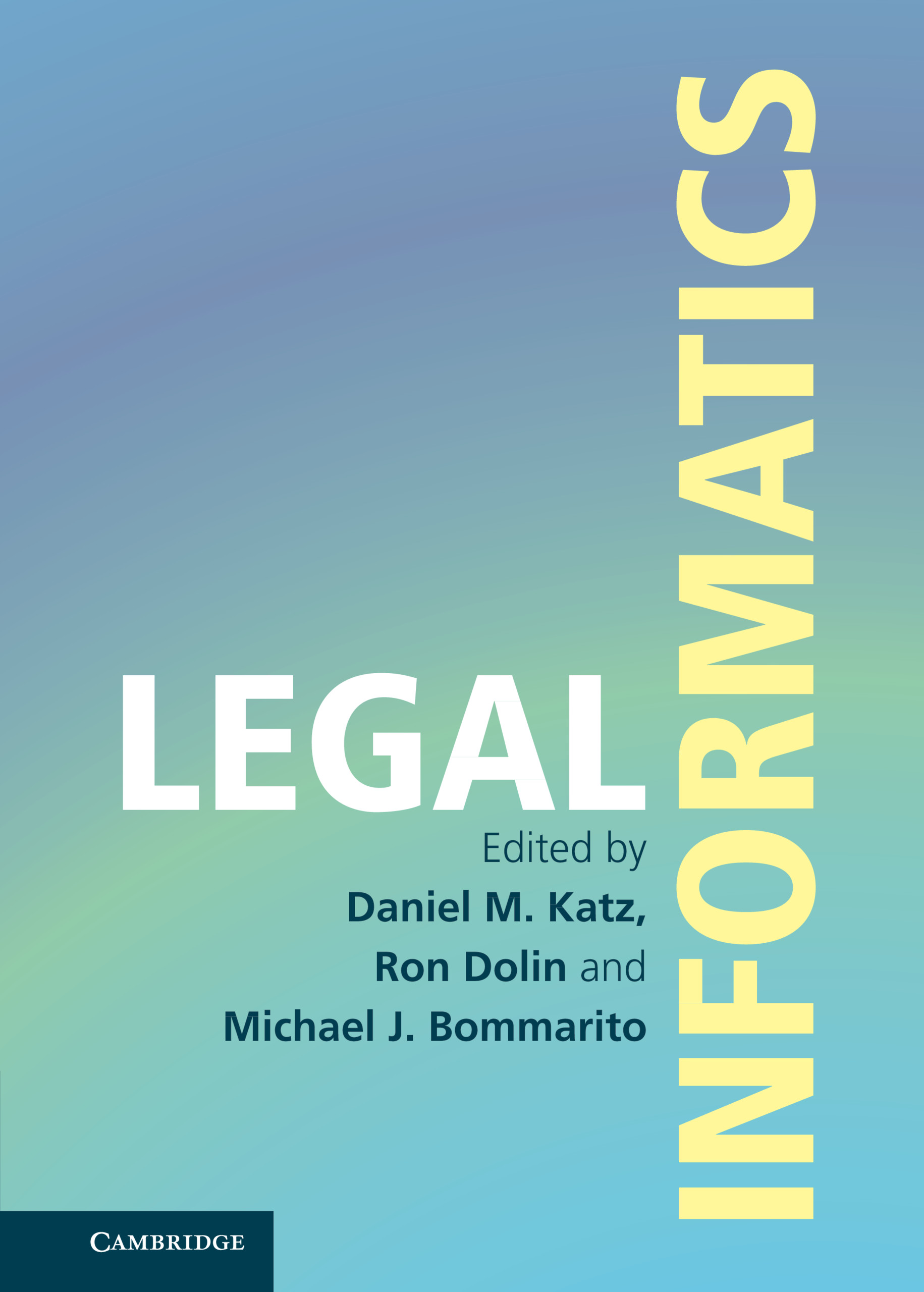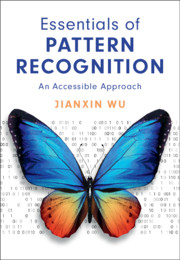Refine search
Actions for selected content:
1004 results in Computational statistics, machine learning and information science
1.1 - Motivation and Rationale for this Book
- from Part I - Introduction to Legal Informatics
-
-
- Book:
- Legal Informatics
- Published online:
- 04 February 2021
- Print publication:
- 18 February 2021, pp 3-4
-
- Chapter
- Export citation
3.10 - Gov2Vec
- from C. - Legal Research, Government Data, and Access to Legal Information
-
-
- Book:
- Legal Informatics
- Published online:
- 04 February 2021
- Print publication:
- 18 February 2021, pp 393-396
-
- Chapter
- Export citation
3.5 - The Core Concepts of E-discovery
- from B. - Litigation and E-discovery
-
-
- Book:
- Legal Informatics
- Published online:
- 04 February 2021
- Print publication:
- 18 February 2021, pp 291-314
-
- Chapter
- Export citation
D. - Evaluation
- from Part II - Legal Informatics
-
- Book:
- Legal Informatics
- Published online:
- 04 February 2021
- Print publication:
- 18 February 2021, pp 177-178
-
- Chapter
- Export citation
3.2 - Contracts as Interfaces
- from A. - Contracts and Patents
-
-
- Book:
- Legal Informatics
- Published online:
- 04 February 2021
- Print publication:
- 18 February 2021, pp 213-238
-
- Chapter
- Export citation
Part II - Legal Informatics
-
- Book:
- Legal Informatics
- Published online:
- 04 February 2021
- Print publication:
- 18 February 2021, pp 31-200
-
- Chapter
- Export citation
3.11 - Representation and Automation of Legal Information
- from C. - Legal Research, Government Data, and Access to Legal Information
-
-
- Book:
- Legal Informatics
- Published online:
- 04 February 2021
- Print publication:
- 18 February 2021, pp 397-406
-
- Chapter
- Export citation
Part III - Use Cases in Legal Informatics
-
- Book:
- Legal Informatics
- Published online:
- 04 February 2021
- Print publication:
- 18 February 2021, pp 201-448
-
- Chapter
- Export citation
A. - Challenges Facing Innovation in Law
- from Part IV - Legal Informatics in the Industrial Context
-
- Book:
- Legal Informatics
- Published online:
- 04 February 2021
- Print publication:
- 18 February 2021, pp 451-480
-
- Chapter
- Export citation
3.1 - Contract Analytics
- from A. - Contracts and Patents
-
-
- Book:
- Legal Informatics
- Published online:
- 04 February 2021
- Print publication:
- 18 February 2021, pp 205-212
-
- Chapter
- Export citation
2.6 - AI + Law
- from B. - Artificial Intelligence, Machine Learning, Natural Language Processing, and Blockchain
-
-
- Book:
- Legal Informatics
- Published online:
- 04 February 2021
- Print publication:
- 18 February 2021, pp 87-93
-
- Chapter
- Export citation
2.13 - Measuring Legal Quality
- from D. - Evaluation
-
-
- Book:
- Legal Informatics
- Published online:
- 04 February 2021
- Print publication:
- 18 February 2021, pp 179-200
-
- Chapter
- Export citation

Legal Informatics
-
- Published online:
- 04 February 2021
- Print publication:
- 18 February 2021

Essentials of Pattern Recognition
- An Accessible Approach
-
- Published online:
- 08 December 2020
- Print publication:
- 19 November 2020
-
- Textbook
- Export citation
2 - Probabilistic Programs as Measures
-
-
- Book:
- Foundations of Probabilistic Programming
- Published online:
- 18 November 2020
- Print publication:
- 03 December 2020, pp 43-74
-
- Chapter
-
- You have access
- Open access
- Export citation
List of Contributors
-
- Book:
- Foundations of Probabilistic Programming
- Published online:
- 18 November 2020
- Print publication:
- 03 December 2020, pp vii-x
-
- Chapter
-
- You have access
- Open access
- Export citation
1 - Semantics of Probabilistic Programming: A Gentle Introduction
-
-
- Book:
- Foundations of Probabilistic Programming
- Published online:
- 18 November 2020
- Print publication:
- 03 December 2020, pp 1-42
-
- Chapter
-
- You have access
- Open access
- Export citation
Preface
-
- Book:
- Foundations of Probabilistic Programming
- Published online:
- 18 November 2020
- Print publication:
- 03 December 2020, pp xi-xiv
-
- Chapter
-
- You have access
- Open access
- Export citation
15 - Programming Unreliable Hardware
-
-
- Book:
- Foundations of Probabilistic Programming
- Published online:
- 18 November 2020
- Print publication:
- 03 December 2020, pp 533-568
-
- Chapter
-
- You have access
- Open access
- Export citation
4 - On Probabilistic λ-Calculi
-
-
- Book:
- Foundations of Probabilistic Programming
- Published online:
- 18 November 2020
- Print publication:
- 03 December 2020, pp 121-144
-
- Chapter
-
- You have access
- Open access
- Export citation
